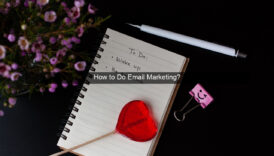How to Do Email Marketing?

- How to Do Email Marketing?
- Building Your Email List the Right Way
- The Importance of Organic Growth
- Creating Compelling Opt-in Forms
- Offering Valuable Incentives
- Crafting Engaging Email Content
- Writing Captivating Subject Lines
- Designing Visually Appealing Emails
- Personalizing Your Email Messages
- Segmenting Your Audience for Targeted Campaigns
- Understanding the Benefits of Segmentation
- Identifying Key Segmentation Criteria
- Implementing Segmentation Strategies
- Analyzing and Optimizing Your Email Marketing Performance
- Key Email Marketing Metrics
- A/B Testing for Continuous Improvement
- Utilizing Email Marketing Tools and Automation

In today’s digital landscape, email marketing remains a powerful tool for businesses to connect with their audience, nurture leads, and drive conversions. It’s a cost-effective way to build relationships, promote products or services, and ultimately, boost your bottom line. But with inboxes overflowing, how do you cut through the noise and make your emails stand out? This comprehensive guide will equip you with the knowledge and strategies to execute effective email marketing campaigns that deliver real results. From crafting compelling content to segmenting your audience and analyzing your performance, we’ll cover everything you need to know to master the art of email marketing. Get ready to unlock the potential of your inbox and transform your email marketing efforts into a revenue-generating machine.

Building Your Email List the Right Way
The Importance of Organic Growth
Building an organic email list is crucial for long-term success. It means attracting subscribers who genuinely want to hear from you, leading to higher engagement and conversion rates. Avoid buying email lists, as this practice often results in low-quality leads and can damage your sender reputation.
Focus on providing valuable content and incentives that entice visitors to subscribe. Offer lead magnets like ebooks, checklists, or exclusive discounts in exchange for their email addresses. This ensures that your subscribers are interested in what you have to offer and are more likely to engage with your emails.
Promote your signup forms strategically across your website, social media platforms, and even offline channels. Make the signup process simple and straightforward to minimize friction and encourage more sign-ups.
Creating Compelling Opt-in Forms
Your opt-in forms are the gateway to your email list. Make them visually appealing and easy to fill out. Clearly communicate the value proposition of subscribing to your list. What benefits will subscribers receive?
Keep the form fields concise, asking only for essential information like name and email address. A longer form can deter potential subscribers. Consider using a double opt-in process to confirm subscriptions and ensure data accuracy.
A/B test different opt-in forms to see which designs and copy resonate best with your audience. Experiment with different placements, colors, and calls to action to optimize your conversion rates.
Offering Valuable Incentives
Incentivize sign-ups by offering valuable lead magnets. These can be free resources, exclusive content, or special discounts that provide immediate value to your subscribers. Tailor your lead magnets to your target audience’s interests and needs.
Ensure your lead magnets are high-quality and deliver on their promise. A valuable lead magnet not only attracts subscribers but also establishes your credibility and expertise in your niche.
Promote your lead magnets prominently on your website and social media channels. Highlight the benefits of subscribing and receiving the free resource to encourage sign-ups.
Crafting Engaging Email Content
Writing Captivating Subject Lines
Your subject line is the first impression you make. It determines whether your email gets opened or lands in the trash. Craft compelling subject lines that are concise, intriguing, and relevant to the email’s content.
Personalize your subject lines whenever possible. Using the subscriber’s name or referencing their past interactions can increase open rates. Avoid using spam trigger words that can get your emails flagged by email providers.
Test different subject line variations to see what resonates best with your audience. A/B testing can help you identify the most effective subject lines for maximizing open rates.
Designing Visually Appealing Emails
A visually appealing email is more likely to capture attention and keep readers engaged. Use a clean and professional design that is consistent with your brand identity.
Use high-quality images and graphics to enhance the visual appeal of your emails. Ensure your emails are mobile-responsive so they display correctly on all devices.
Keep your email layout clean and easy to navigate. Use clear headings, bullet points, and white space to break up text and improve readability.
Personalizing Your Email Messages
Personalization goes beyond simply including the subscriber’s name. Segment your audience based on their demographics, interests, and behaviors to deliver targeted messages that resonate with each individual.
Use dynamic content to tailor the email content based on the subscriber’s preferences and past interactions. This level of personalization can significantly improve engagement and conversion rates.
Track subscriber behavior and use the data to personalize future email campaigns. The more you know about your subscribers, the better you can tailor your messages to their individual needs.
Segmenting Your Audience for Targeted Campaigns
Understanding the Benefits of Segmentation
Segmenting your email list allows you to send targeted messages to specific groups of subscribers. This improves the relevance of your emails, leading to higher open and click-through rates.
By tailoring your messages to specific segments, you can address their unique needs and interests. This personalized approach can significantly improve engagement and conversions.
Segmentation also helps you avoid sending irrelevant emails to subscribers who are not interested in a particular topic. This can reduce unsubscribes and improve your sender reputation.
Identifying Key Segmentation Criteria
There are various criteria you can use to segment your audience, including demographics, purchase history, website activity, and email engagement.
Demographics such as age, gender, and location can help you tailor your messaging to specific groups. Purchase history can be used to recommend related products or offer exclusive discounts.
Website activity and email engagement can provide insights into subscriber interests and preferences, allowing you to send more relevant content.
Implementing Segmentation Strategies
Use your email marketing platform’s segmentation tools to create targeted segments based on your chosen criteria.
Develop targeted email campaigns for each segment, tailoring the content and offers to their specific needs and interests.
Continuously analyze the performance of your segmented campaigns and refine your strategies based on the results.
Analyzing and Optimizing Your Email Marketing Performance
Key Email Marketing Metrics
Track key email marketing metrics such as open rates, click-through rates, conversion rates, and unsubscribe rates to measure the success of your campaigns.
Open rates indicate how effective your subject lines are at grabbing attention. Click-through rates show how engaging your email content is.
Conversion rates measure how many subscribers are taking the desired action, such as making a purchase or signing up for a webinar. Unsubscribe rates indicate how relevant your emails are to your audience.
A/B Testing for Continuous Improvement
A/B testing involves sending two different versions of an email to a small segment of your audience to see which performs better. This allows you to optimize your email campaigns based on data.
Test different elements of your emails, such as subject lines, calls to action, and email design, to identify what resonates best with your audience.
Continuously analyze the results of your A/B tests and implement the winning variations to improve your overall email marketing performance.
Utilizing Email Marketing Tools and Automation
Leverage email marketing tools and automation to streamline your email marketing efforts and improve efficiency.
Use automation to send welcome emails, abandoned cart reminders, and personalized product recommendations. This saves time and allows you to nurture leads effectively.
Choose an email marketing platform that offers robust analytics and reporting features to track your performance and identify areas for improvement.
| Metric | Description |
|---|---|
| Open Rate | Percentage of recipients who opened your email. |
| Click-Through Rate | Percentage of recipients who clicked on a link in your email. |
- Use strong subject lines.
- Segment your audience.
- Analyze your results.
Email marketing is a powerful tool for businesses of all sizes. By following the strategies outlined in this guide, you can create effective email marketing campaigns that drive results. Remember to focus on building a strong email list, crafting engaging content, segmenting your audience, and analyzing your performance to continuously improve your results.
What is email marketing?
Email marketing is the use of email to promote products or services while developing relationships with potential customers or clients.
How do I build an email list?
Offer valuable incentives like lead magnets and create compelling opt-in forms on your website and social media platforms.



